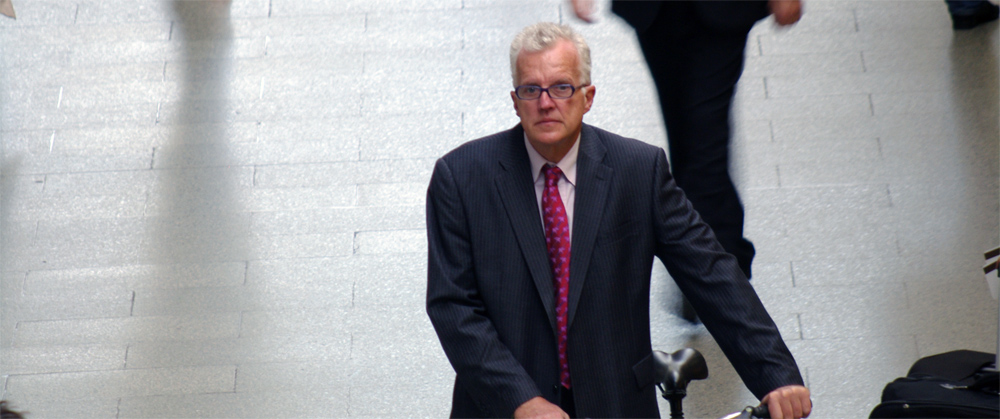The Underground is the least loved of British inventions, especially by its passengers at rush hour. It is used as an excuse for being late at work more often than it is praised. Nevertheless, when the first underground train, operated by the Metropolitan Railway, puffed and wheezed down the track between Paddington and Farringdon 150 years ago, it did not just mark the invention of a new form of transport but actually revolutionised the very nature of cities.
The Times had been sceptical that the idea would catch on. During construction, its correspondent wrote: ‘A subterranean railway under London was awfully suggestive of dark, noisome tunnels…passages inhabited by rats, soaked with sewer drippings and poisoned by the escape of gas mains’. He underestimated Londoners’ fortitude. On that first day, January 10 1863, 30,000 people, ventured into the ‘noisome tunnels’, bringing in total receipts of £850, and the Underground has never looked back. Within a few years, extensions were sprouting out to remote villages, bringing them into the Metropolitan fold and transforming the scale of the capital. The strawberry fields of Hammersmith soon became the suburban homes of the new breed of commuter.
The Times had not been the only sceptical voice. It had taken three decades to get the line built after the idea had been first mooted by Charles Pearson, the the City solicitor who has the best claim to be the father of the Underground. Now, however, there was no looking back. The Metropolitan Railway’s success was all the more remarkable in that it was the only underground railway in the world ever to be operated by steam engines. That was a brave – foolhardy even – idea to say the least. Although the engines were fitted with mechanisms to condense the smoke, the atmosphere was bad enough to ensure that local pharmacies did good business out of the ‘Metropolitan Mixtures’ they sold near stations to revive choking passengers. The Metropolitan Railway’s spin doctors were unabashed, however, suggesting that a trip on its railway provided a kind of health cure for people who suffered from asthma, for which the sulphurous and other fumes were beneficial.
The journey itself may have taken place in a cloud of smoke, but the whole idea behind building underground lines was to improve the way people lived and get them out of their insalubrious housing. No longer did they have to reside close to where they worked which, in London, meant the rookeries of Seven Dials or the slums of Southwark. Pearson was motivated by the prospect of enabling Londoners to live in little houses with gardens far from the smoky factories where they worked.
In fact, rather ironically in view of Pearson’s ideal, underground and suburban railways have allowed towns to remain more compact than they would have been without them. Essentially, without them, London would have had to be redesigned on the American model of urban spaces, with wide streets and huge parking lots to accommodate the daily commute into work. The very fabric of the capital would be completely different and many of its landmarks would have been torn down in the rush to accommodate the insatiable appetite of the motor car.
The Underground, therefore, has been a civilising influence even though people understandably have no affection for it when they are they are squeezed, nose to armpit, into the cramped trains. However, that is the result of the system’s very success but also, sadly, the failure to understand its value by successive generations of politicians who withheld money to invest in the system.
Remarkably, in London, by 1907, all but two of the current Tube lines, had opened. By 1907 and, at the time, the capital actually had a surfeit of lines, all built by private companies. Then, however, as funding became the responsibility of government because of the rising costs, the opportunity to build on that situation was missed. Consequently, in the following 62 years, there were only extensions into the suburbs rather than any additions to the network in central London.
Indeed, even the two more recent additions, the Victoria (opened in 1969) and the Jubilee (1979 and 2000) had no new stations within the central London bounded by the Circle Line.
That means there are still significant areas of central London that have no Tube such as Chelsea and Fleet Street, and in effect London is short of a couple of lines. And again, the sceptics are being allowed to dominate the debate. Sure, Crossrail, the new tunnel under London linking Liverpool Street and Paddington stations, will be completed by the end of the decade, and it will be built to a very high standard with fantastic stations, but it took 50 years from drawing board to construction.
Worse there is nothing definite on the stocks. There is vague talk of a Crossrail Two, the old Chelsea to Hackney plan, but the Mayor, Boris Johnson, has been slow to work up plans for any major new lines, concentrating, instead, on the rather minor extension from Kennington to Battersea which, it is hoped, will be largely developer-funded. Places like Streatham, Camberwell and Harlesden, ripe for tube extensions or new lines, will remain off the wonderful Harry Beck map seemingly forever.
London, therefore, is still suffering from the failure of imagination that has dogged the history of this great invention in its homeland. The politicians are always looking at ‘business cases’ or suggesting new lines ‘need to pay their way’ when, in fact, it is so obvious that a healthy and growing Underground is the very basis for a health and growing London economy. Even 150 after years of success and worldwide imitation, that lesson has still to be learnt.
